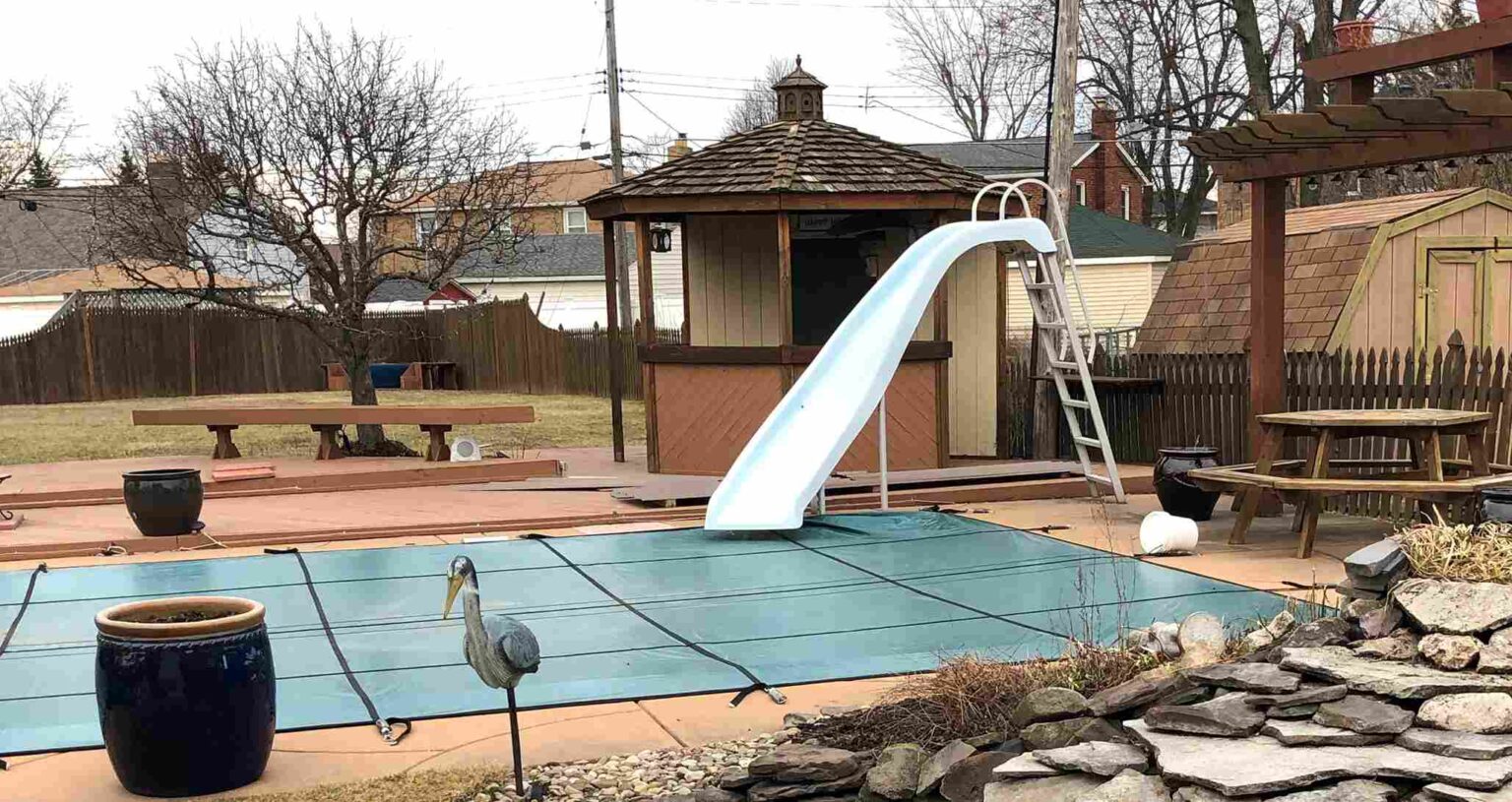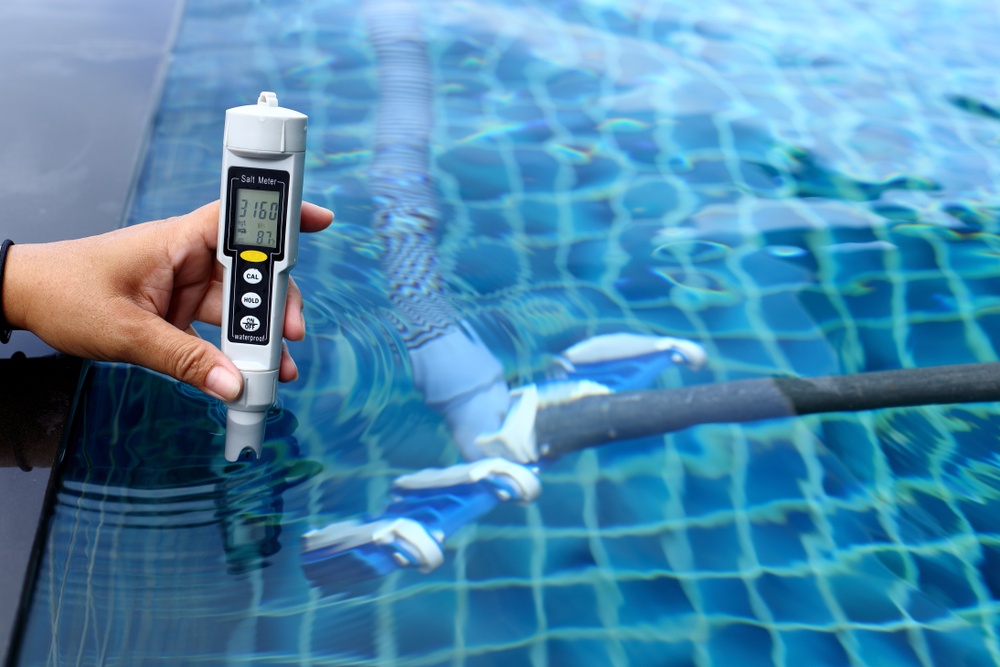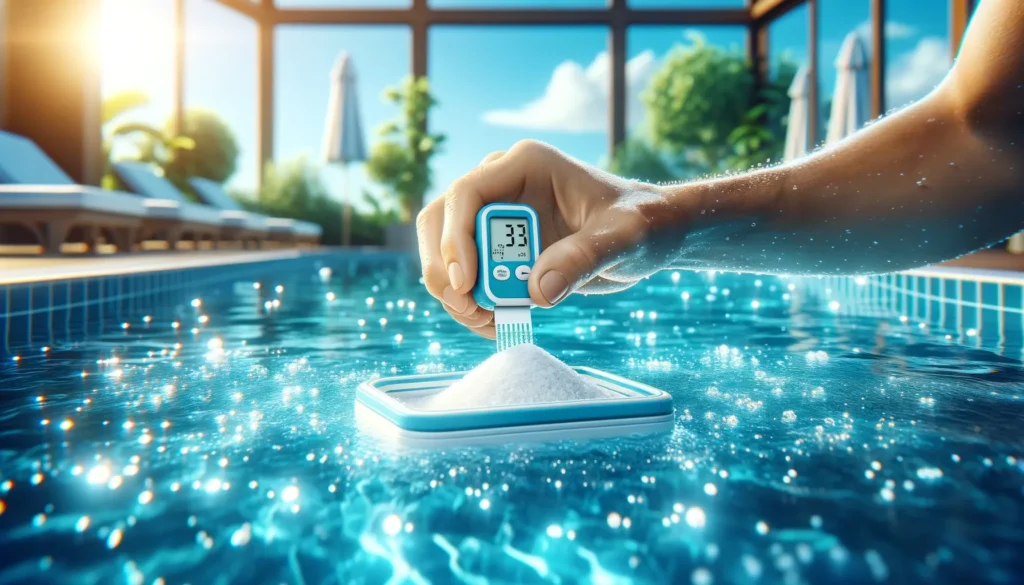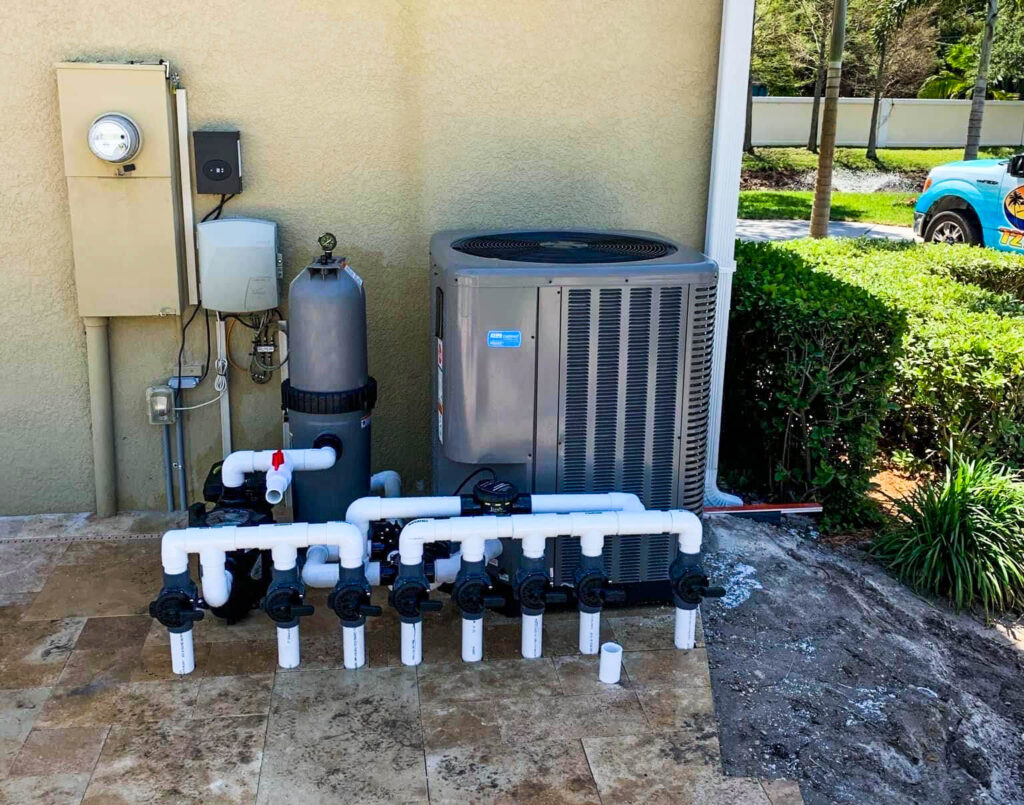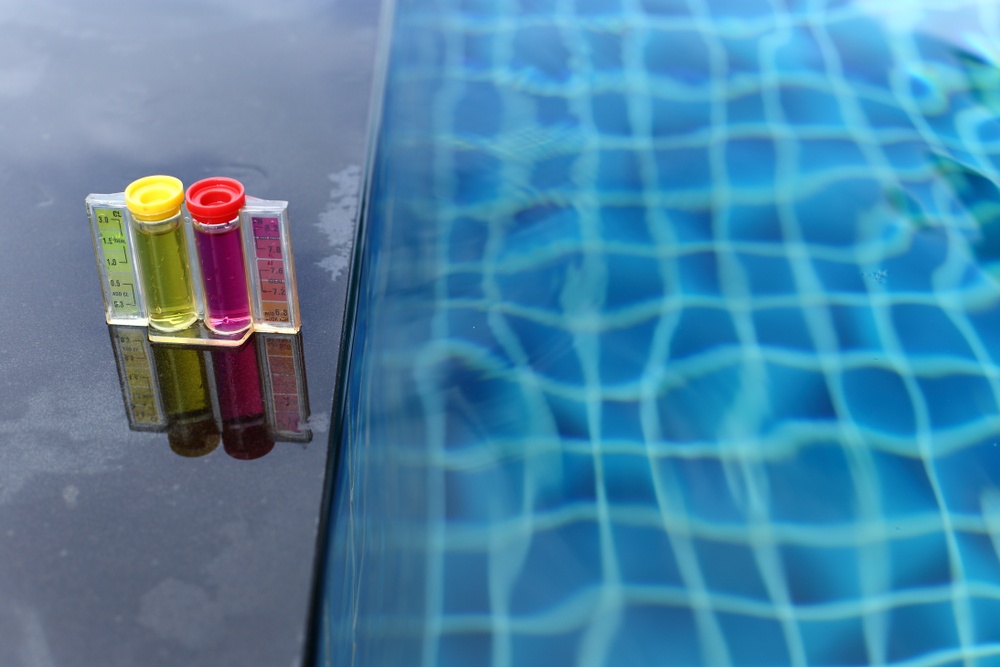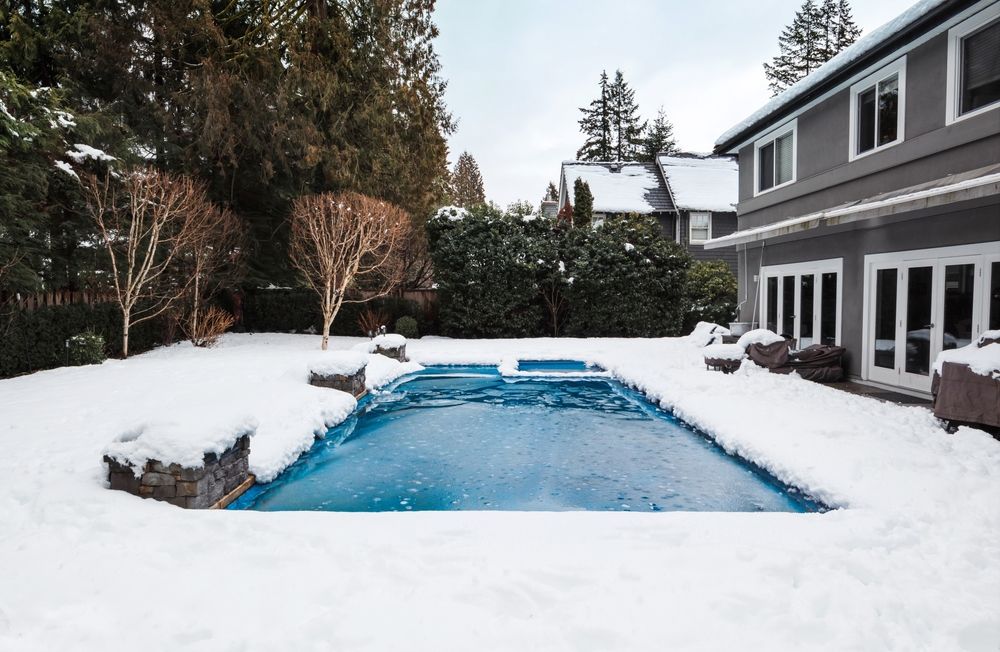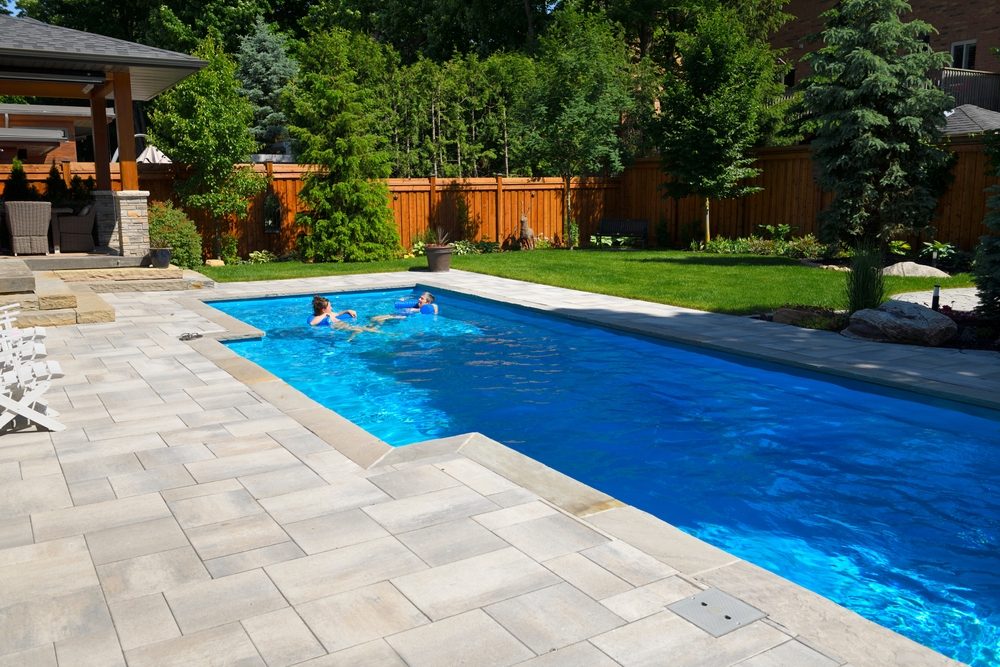Winterizing and Closing an Inground Pool
Winter is a magical time for cozy fires, warm cocoa, and snowball fights. But it’s not so magical if you haven’t taken steps to winterizing your inground pool properly. While pool ownership brings joy and relaxation during the summer months, neglecting winterization can lead to substantial repair costs, water imbalance, and potential damage. Today, we’ll take you through the nuances of pool winterization and help you understand the difference between merely closing your pool and truly safeguarding it for the cold season.
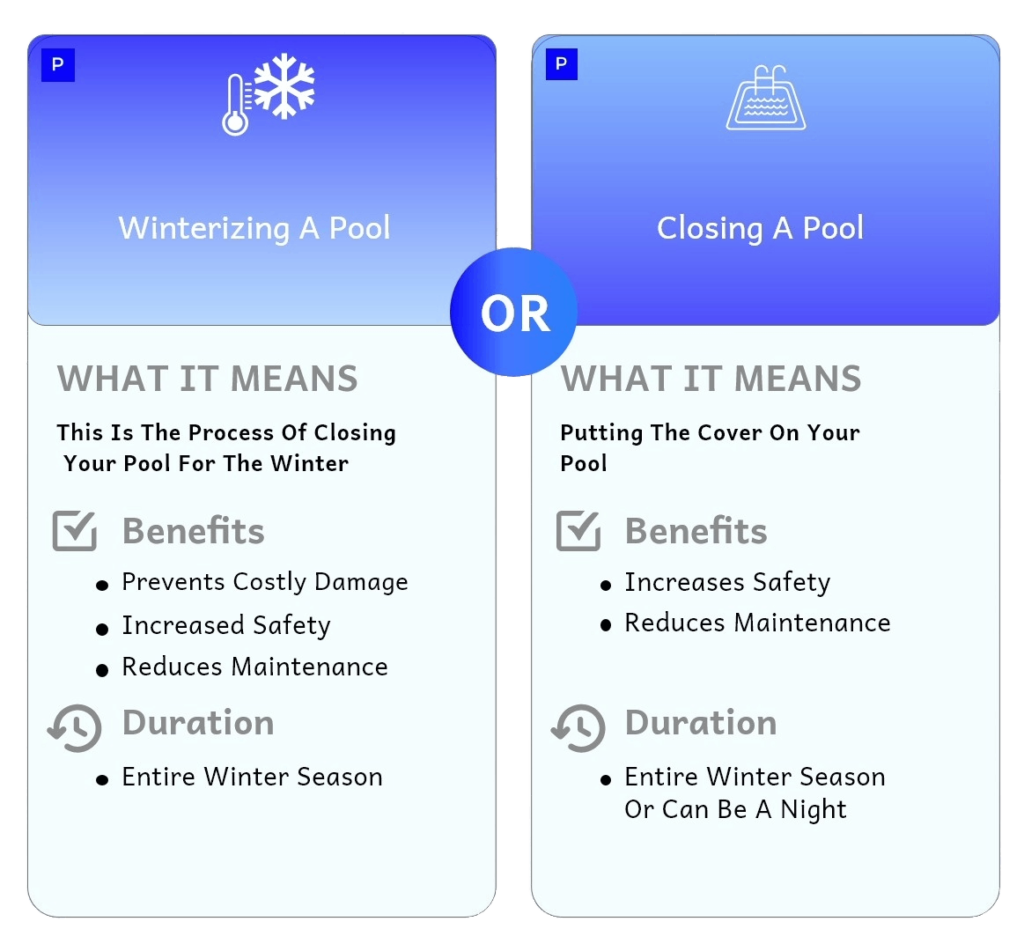
Winterizing vs. Closing: Understanding the Difference
Before diving into the intricate details of winterization, let’s clarify the difference between closing and winterizing an inground pool. These terms often get used interchangeably, but they aren’t the same thing.
Closing a Pool
Closing refers to covering the pool with a safety cover. It can be done nightly, seasonally, or during periods when the pool won’t be in use. Covering the pool doesn’t necessarily mean it’s been winterized. For longer durations, like the entire winter season, the pool’s water chemistry needs to be balanced to prevent algae growth and other issues. Learn more about water chemistry in our comprehensive guide on pool chemistry.
Winterizing Your Inground Pool
Winterizing is a more rigorous process, designed to protect your Inground Pool and its equipment from potential damage during the colder months. This involves more than just placing a cover;
- It includes steps like draining water from the lines and vessels
- Turning off pool equipment, and balancing the pool water
Winterizing ensures that when your Inground Pool water freezes and expands, it won’t damage your valuable investment.
Winterizing vs. Closing: Understanding the Difference
Before diving into the intricate details of winterization, let’s clarify the difference between closing and winterizing an inground pool. These terms often get used interchangeably, but they aren’t the same thing.
Closing a Pool
Closing refers to covering the pool with a safety cover. It can be done nightly, seasonally, or during periods when the pool won’t be in use. Covering the pool doesn’t necessarily mean it’s been winterized. For longer durations, like the entire winter season, the pool’s water chemistry needs to be balanced to prevent algae growth and other issues. Learn more about water chemistry in our comprehensive guide on pool chemistry.
Winterizing Your Inground Pool
Winterizing is a more rigorous process, designed to protect your Inground Pool and its equipment from potential damage during the colder months. This involves more than just placing a cover;
- It includes steps like draining water from the lines and vessels
- Turning off pool equipment, and balancing the pool water
Winterizing ensures that when your Inground Pool water freezes and expands, it won’t damage your valuable investment.

When Should You Close Your Pool for the Winter?
It’s time to take precautions to keep your pool safe as the temperature starts to drop. Before you cover your pool with a seasonal safety cover and store it for the winter, be sure you have followed the right procedures to prepare it.
In order to protect your pool and its components from damage, it’s critical to keep an eye on the water temperature. Give yourself plenty of time and begin the procedure as soon as your pool’s water level begins to fall. Water that has frozen might expand and cause damage.
When it comes time to open your pool in the spring, remember to take these precautions to keep everything in working order and safeguard your pool. Please take note that if you reside in a milder area and will be using your pool less in the winter, there are additional procedures to follow below. Speak with your PoolForce pool dealer if you have any questions about any of the process’s procedures.
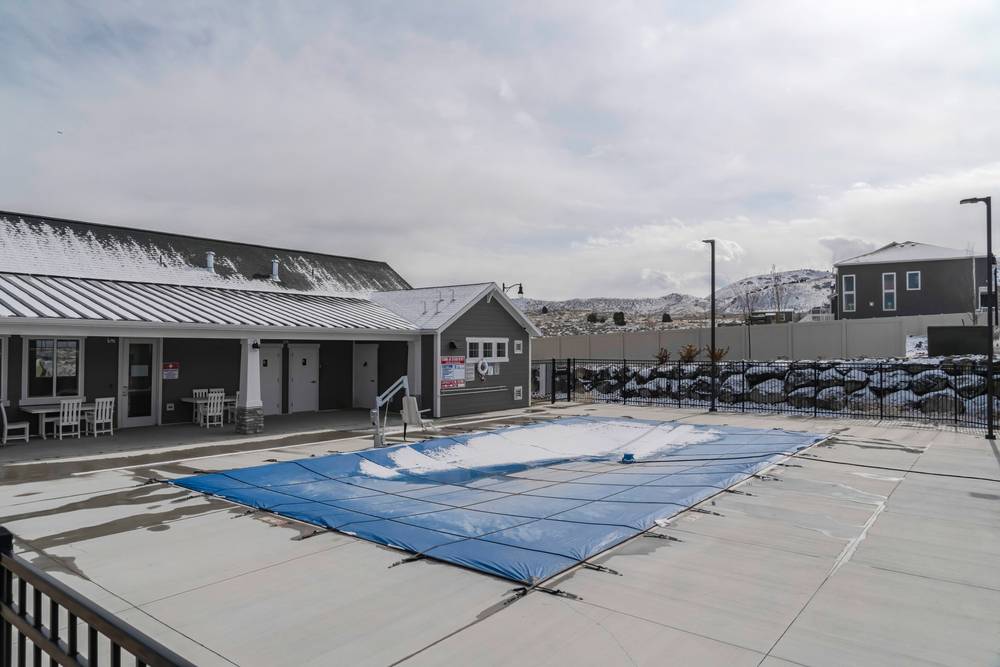
Essential Tools and Chemicals for Pool Winterization

Before embarking on this task, make sure you have all the required tools and chemicals. It’s crucial to be well-prepared so that the process goes smoothly.
Tools Needed
- Screwdriver
- Wrench
- Ratchet set
- Wall brush
- Leaf net
- Air blower
- Seasonal safety cover
- Pool vacuum
Chemicals Needed
- Chlorine
- Algaecide
- Cyanuric acid
- Shock
- Non-toxic anti-freeze
- Depending on the pH level of your pool, which you can test on your own or collect a sample and bring it to a testing facility or local builder, you may need a pH increaser or decreaser
Winterizing Your Inground Pool in Cold Climates
If you reside in areas where temperatures dip between 25 and 50 degrees, you’ll need to take extra precautions for winterizing your inground pool.
 Adjust the pH of the pool to 7.2-7.8. This will stop algae growth, scaling, and discoloration.
Adjust the pH of the pool to 7.2-7.8. This will stop algae growth, scaling, and discoloration.
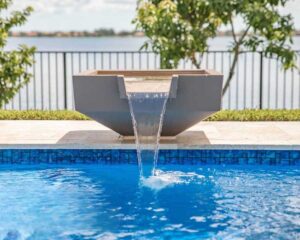
Depending on the level of dirt in the water, run the filter for 24 to 48 hours.
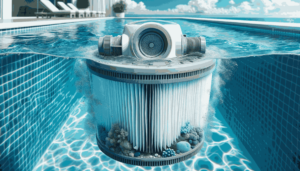
Thoroughly vacuum the pool and remove any floating debris with a skim.
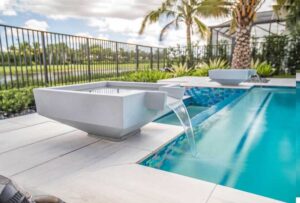
To prevent algae from growing before the water freezes, add an algaecide.
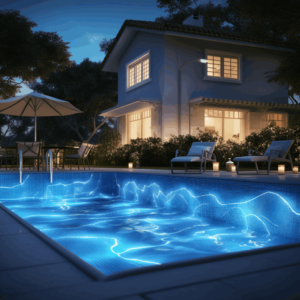
Follow your pool manufacturer’s directions for lowering your water level. See below for more information.

After turning off the filter pump, empty the heater, filter, pump, and other associated equipment. Keep equipment stored to avoid damage. For appropriate covering and lubrication, adhere to the manufacturer’s instructions.
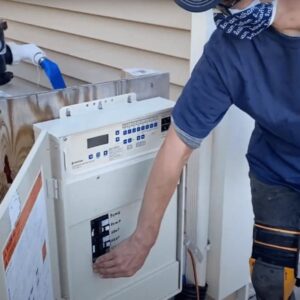
Remove all fuses or turn off the circuit breakers, then cut off all power to the support equipment.
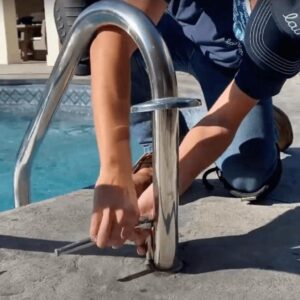
Accessories should be removed and stored. Ask your pool specialist if you have a diving board or slide.
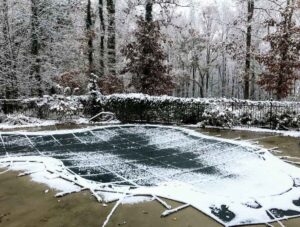
Use a seasonal safety cover to safely cover the pool. Make sure the cover’s edge is sealed to prevent wind from getting beneath it. A quality pool cover keeps out leaves and other debris while withstanding water, weather, and chemicals in the pool.
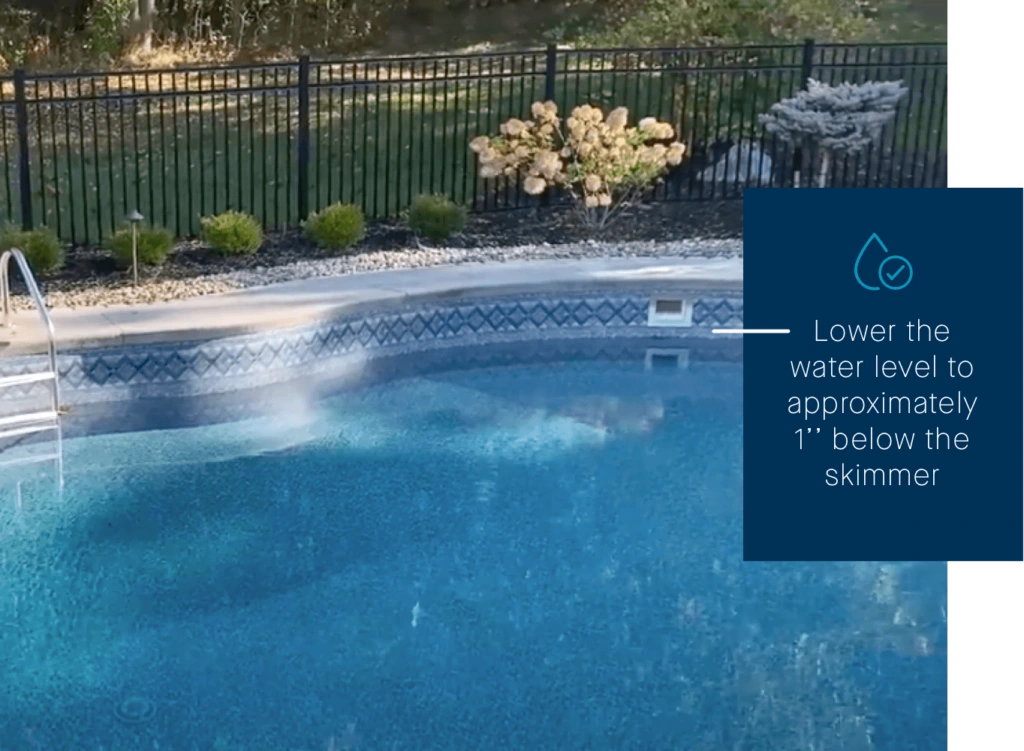
Water Levels: How Much of Your Pool Do You Drain for the Winter?
As a general rule, you should lower the water level to about 1″ beneath the skimmer. You should never empty your pool entirely. Speak with a pool specialist if you believe that draining your pool is necessary.
When using a seasonal pool cover, make sure you adhere to the water level recommendations provided by the manufacturer. There are those who advise plugging the skimmer and raising the water level to a level where the snow-laden cover can be supported when the pool pipes are blown out.
Make contact with our knowledgeable staff if you have any questions about any step of the winterizing process, including draining the water.
Winterizing Your Inground Pool in Mild Climates
Your swimming pool season will last longer if you reside in a mild climate. Even in warmer climates, it is not unusual for temperatures to occasionally drop below freezing, so there may be times when you use your pool very little. Even though you might not need to completely winterize your pool, by following these six simple steps, you can reduce the amount of maintenance required.
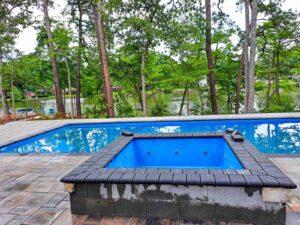 Don’t forget to confirm your freeze protection. It is frequently an analog dial that is integrated into your pool pump or pool automation system. Making sure your freeze protection is activated as the temperature drops will help to avoid any cracked or damaged equipment.
Don’t forget to confirm your freeze protection. It is frequently an analog dial that is integrated into your pool pump or pool automation system. Making sure your freeze protection is activated as the temperature drops will help to avoid any cracked or damaged equipment.
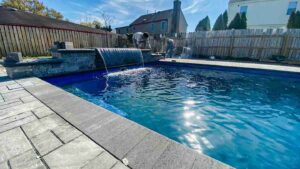
Reduce the amount of time the pump runs and cut in half the amount of time your filter runs. In order to ensure that your freeze protection counts toward the time needed to filter the pool when it activates, try to schedule the run time for the coldest part of the evening. If done correctly, this results in a small cost savings that can add up.

To maintain free available chlorine in the pool between 1.0 and 3.0 parts per million, test the pH of the pool frequently and keep it between 7.2 and 7.8.
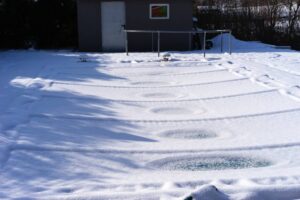
Even though you are not using your pool as much, you should still maintain and care for it according to the manufacturer’s instructions. If you have any additional pool features, like slides and other accessories, think about winterizing them to avoid any damage.
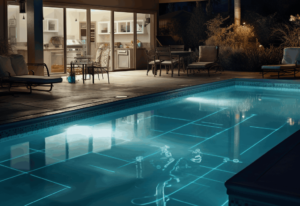
Should you choose not to cover your pool, make sure you vacuum when necessary, clean the skimmer once a week, and maintain the filter as directed by the manufacturer.

By covering your pool, you can minimize the need for chlorine and keep debris out. Shock treat the water in accordance with the manufacturer’s instructions before covering it.
Winterizing Your Inground Pool Checklist
Get step-by-step instructions for closing and winterizing your pool in cold and moderate climates by downloading Latham’s free maintenance resource.
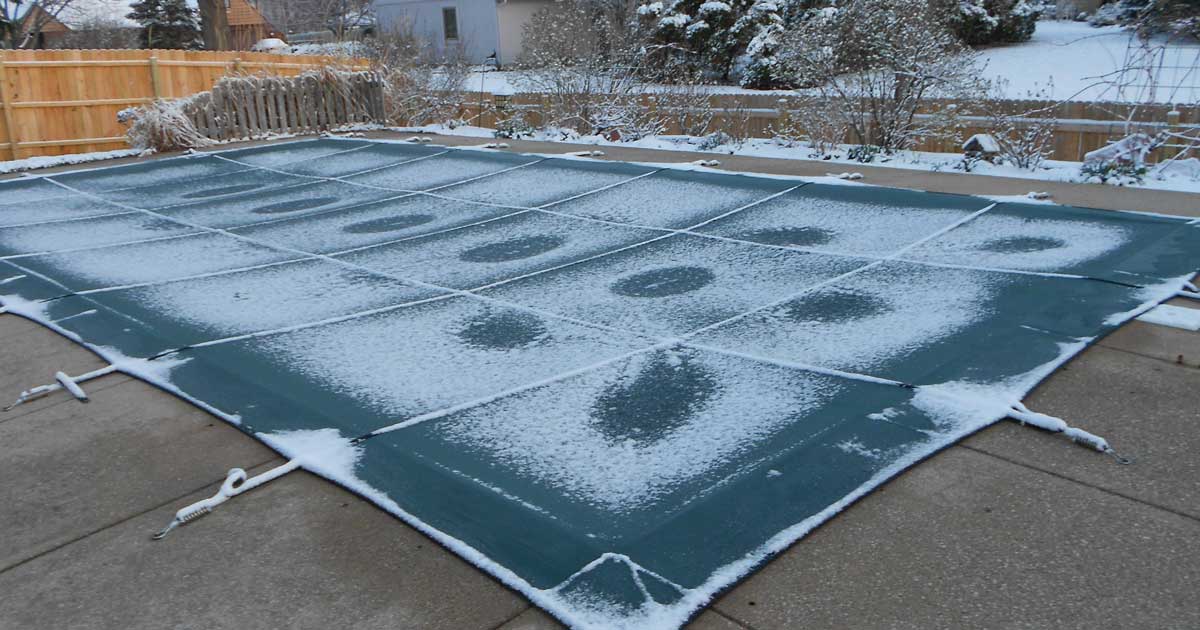
Why Should You Cover and Close Your Pool During the Winter?
For the duration of your backyard swimming pool’s life, you can save a ton of money, time, and frustration by maintaining your pool throughout the swim season and then properly winterizing it as the weather turns cold. When it comes time to open your pool for the spring, you’ll have less maintenance to do if you close and cover it during the off-season. This implies that when the weather warms up, you and your family will be able to enjoy your pool sooner.
A new pool owner may find all of the steps we’ve listed daunting, but help is always available from your favorite Pool company, PoolForce.
Why Should You Cover and Close Your Pool During the Winter?
For the duration of your backyard swimming pool’s life, you can save a ton of money, time, and frustration by maintaining your pool throughout the swim season and then properly winterizing it as the weather turns cold. When it comes time to open your pool for the spring, you’ll have less maintenance to do if you close and cover it during the off-season. This implies that when the weather warms up, you and your family will be able to enjoy your pool sooner.
A new pool owner may find all of the steps we’ve listed daunting, but help is always available from your favorite Pool company, PoolForce.

Is It suitable to Leave a Pool Uncovered During the Winter?
We strongly advise against skipping these steps and leaving your pool uncovered, as tempting as it may be. Cover your pool for safety if it won’t be used for an extended amount of time. Additionally, this will help to maintain the water chemistry, stop debris from entering the pool, and stop the growth of algae.
By covering your pool, you can avoid cleaning it while it’s not in use, which will save you time in the winter. When the time comes to open your pool, it will also lessen the amount of cleaning and upkeep you will need to perform.
